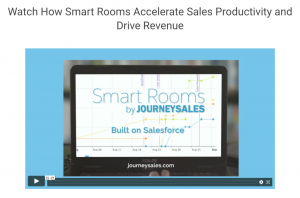
A fascinating new Forrester research report from finds that companies “waste a ton of money” on bad content that “buyers don’t want and sellers won’t use.” The survey of marketing decision-makers reveals that few of them think they have a complete understanding of exactly what content sales needs, although they recognize that the sales process is a crucial channel for content distribution. Analyst Laura Ramos identifies a number of specific practices that have helped companies create marketing content that satisfies both buyers and sellers. The report does not single out video as a content type, but the best practices Ramos recommends do suggest some new video tactics for a modern B2B buying experience. (The full Forrester Report is available for download here.) Here’s my take on five content strategy recommendations.
Produce content that is modularized for industry or role
A company that supplies robotics software, uiPath, pairs industry-savvy copywriters with marketing channel specialists to produce content modules that sales can mix and match by topic, idea, or industry. Video tactics might include bite-sizing webinars and demos — a fairly simple editing task. Bookending product videos with different intros and outros is another way to target an industry or role without creating a whole new video.
Augment content with resources that bring messages to life
The reference here is to “big rock” content assets (e.g., eBooks) that will be divided into digestible bits like blog posts, infographics, and videos. The most successful programs include additional sales enablement content to help salespeople understand the marketing content from the buyers’ point of view. One way to help sales get more out of marketing videos is to create an interactive version augmented with examples, objection-handling suggestions, quizzes, etc.
Use content hubs to put sales in the spotlight
Content hubs are microsites customized with relevant content and collaboration tools for a prospect company’s buying team. Journey Sales, a client of ours, provides “Smart Room” software on SalesForce. Other content hub vendors include Folloze, Triblio, and Uberflip. Content hubs are supposed to foster engagement between buying teams and sales teams. Clearly, they should be stocked with lots of different kinds of content. Obviously, a well-stocked content hub is going to include existing marketing videos, but the emphasis should be on information customers want, not product promotion. Video FAQs would fit right in.
Use sales as an important source of insight
Most of the videos we’ve produced over the years have incorporated ideas from people in sales. They’re the ones with the stories, after all. They also understand the role of influencers and and what motivates prospects to buy. So I was astonished to read in the Forrester report that “only 15% of survey respondents say that marketing and sales jointly collaborate on persona-based content that both teams use in customer interactions . . . [and] one in four admits that they don’t collaborate at all.” Yikes. Especially since we know that video is especially effective later in the sales process, keeping sales involved should by high on everyone’s list of video tactics.
Help salespeople develop their personal brands
Everyone knows that buyers access a lot of company content before they ever contact sales. But when they do engage with sales, they want to feel they’re in good hands. A great way to increase engagement with visual content is to create personalized videos where salespeople and/or subject matter experts explain specific issues. Technically, this isn’t that hard to do. Here’s a well-researched list of video platforms that can be used to record and share personalized videos.
